By 2023, the outlook for the global fashion eCommerce industry is expected to be an optimistic one, with a total market share of over $1.2 trillion. Nevertheless, uncertain economic conditions have prompted consumers to adjust their shopping preferences and maximize their spending.
With shoppers becoming increasingly budget-conscious, delivering seamless product discovery experiences is key. Frictionless and valuable shopping journeys that inspire shoppers and connect them to the right products go a long way. In this guide, we’ll touch upon everything you need to know about product discovery for fashion brands, including tips on using artificial intelligence (AI) to make for loyal customers and drive conversion (CVR).
Online Shoppers and Global Fashion eCommerce
Fashion tends to perform well online. Data shows that it is the second-largest eCommerce category in the US, with only computers and consumer electronics surpassing it. Of the fashion segments, apparel makes up most online purchases, but revenue from accessories and footwear is still significant worldwide. Apparel was able to rake in 2 billion users in 2021 alone, and it’s only expected to increase in the coming years.
Still, the global fashion industry remains cautiously optimistic. While the biggest performers overcame disruptions such as material shortages, transportation bottlenecks, and soaring shipping fees in the last two years, many companies still struggle to keep up. Further, supply chain pressures and waning consumer demand continue to undermine growth. These will likely pressure retailers to increase prices, with 65% of executives expecting a hike. This won’t be good news for consumers who are already experiencing the inflation pinch.
One survey found that while shoppers were mostly concerned about grocery prices, 62% also felt somewhat or very worried about the rising costs of apparel and shoes. This has been reflected in consumer spending, with a whopping 85% of respondents reporting that rising inflation affected their shopping habits. Further, 79% started looking for discounts, 77% cut back on their shopping, 66% avoided shipping costs, and 65% postponed minor purchases.
Fashion Industry Challenges in the Digital World
Notwithstanding the issues caused by the pandemic and inflation, shopping for fashion items online has always been tricky. The last two years expedited the transition to digital shopping, with 48% of shoppers saying they did so because of the pandemic, 27% citing convenience, and 11% enjoying online deals and promotions.
However, concerns persist, even among generations that feel more at ease with eCommerce. At least 47% of customers worldwide dislike online shopping because they can’t see the products in person. Meanwhile, 43% prefer not to shop online because they can’t try on and feel the items before buying them. When purchases don’t match expectations, they lead to returns. At least 38% of shoppers sent back items because they didn’t fit well, 15% did so because the clothes didn’t suit them, and 14% found the quality lacking.
Moreover, the retail experience from physical stores is more difficult to recreate online. Yet, shoppers have higher expectations from brands, especially when they’re more technologically savvy. Sixty-six percent of online shoppers expect brands to understand their needs and expectations through various means such as connected journeys, innovations, data protection, and personalization.
Product Discovery Through Virtual Fashion Racks
Considering these challenges, how can brands make a real difference? Customers seek out companies that provide more value to their shopping journey, and retailers who deliver compelling and seamless product discovery experiences can do just that.
What Is Product Discovery?
Simply put, product discovery is a process that enables shoppers to find items they want that appeal to their particular tastes. It can happen anywhere in the customer journey, although it typically begins with a product search. Inspiration can strike anytime for shoppers, and it’s crucial to deliver when that happens — be it through relevant search results, product recommendations, or personalized emails.
Why Does It Matter?
Product discovery sets the tone for the customer experience. Through it, brands can communicate their understanding of customer needs and expectations. A high-quality product may be the next best thing, but what’s the use if customers can’t find it? The ease with which consumers can land the right product on your site will separate you from the competition.
Product discovery also makes the process of online shopping more enjoyable. It helps to quickly surface relevant products and replicates the in-person experience of discovering new favorites on fashion racks. When brands can achieve the joy of shopping online, they will have higher conversion (CVR), larger basket sizes, and repeat customers.
Meanwhile, AI-powered product discovery empowers brands with granular customer insights. It can detect trends and identify well-performing products. The data impacts personalization, paving the way for individualized shopping experiences informed by context and shopping behavior.
Shoppers Have Higher Expectations From Online Retail Than Ever Before
While it’s easy enough to focus on the “locating the right product” part of our product discovery definition, customers desire new, and inspiring experiences to make online shopping more enjoyable and memorable.
In 2021, companies invested between 1.6% and 1.8% of their revenues in technology, such as fashion AI. That figure is predicted to fall between 3% and 3.5% by 2030. To this effect, shoppers have come to expect innovative and experiential experiences. Many shoppers associate technology with better shopping journeys. According to the National Retail Federation (NRF), 80% of online shoppers and 63% of mobile shoppers think that new technologies and innovations improve their experience.
Given the high bar set by online consumers, the best practices below are a few ways to raise the standards for eCommerce shopping experiences.
1. Capture Shoppers’ Attention With an Up-to-Date Homepage
An updated homepage is an excellent opportunity to make a great first impression. It should capture shoppers’ interests and introduce your brand to new visitors. You have a short window of time to work with before shoppers leave. Customers only need 50 milliseconds to decide if a website is worth their time, and 38% of visitors will leave if they find it lacking.
For this reason, your homepage should be aesthetically pleasing and feature all the best you have to offer. Eye-catching photos are a must, and videos can encourage engagement and more page views. You can make your homepage more interactive with promotions and social content, and keep it current with your latest products. Luisaviaroma has the complete package with eye-catching visuals, season-relevant recommendations, and new releases to jumpstart the customer journey.
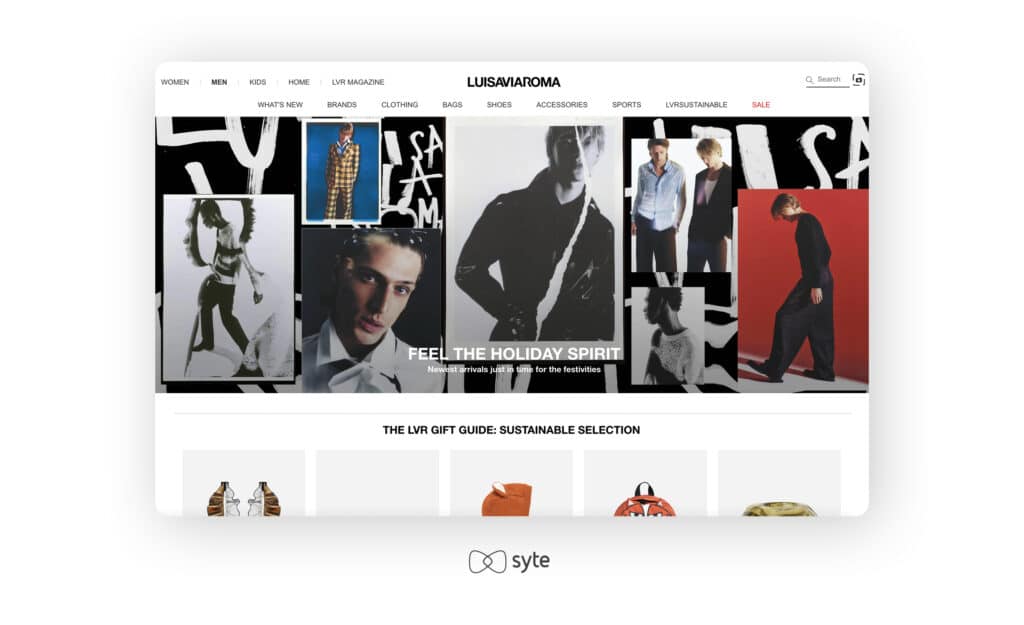
2. Make Navigation Intuitive
Intuitive navigation is an indispensable part of seamless product discovery. The navigation menu is usually the go-to section on your website that can make or break your brand, with 38% of consumers looking at navigation links when visiting a site for the first time.
To optimize your navigation, clearly label your menu and supplement it with icons so shoppers can easily find clothes, just like Glassons has done. Your navigation should always be logical and intuitive so shoppers can seamlessly explore and find their way around your site.
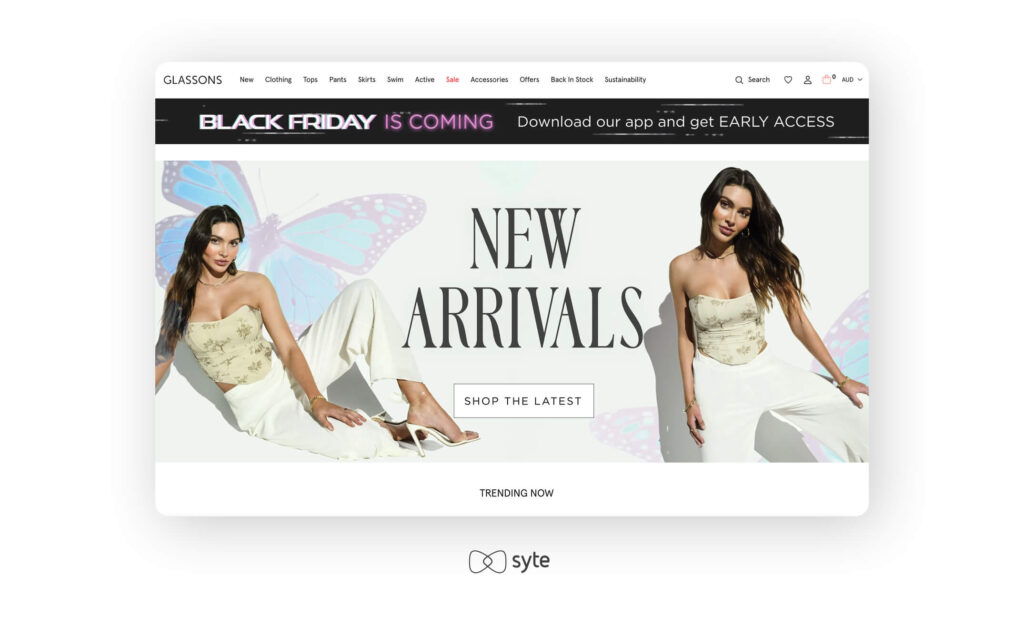
3. Empower Customers With a Visual Search Function
Customers won’t always be familiar with industry terms used to describe items. Still, that shouldn’t keep them from connecting with the perfect pieces. With visual AI, shoppers are empowered with an image search that returns the exact or most similar items in your inventory. More consumers are using the technology, with about 36% opting for visual search and over 50% saying visual information is more important than text when shopping online.
If you offer image search technology, make sure to feature it prominently. There are multiple ways to do this, including a camera icon with a pop-up on the homepage, tooltips, or an option to search fashion by an image on product detail pages (PDPs). For Laam, the site has a special landing page for visual search. Even if users have no photo on-hand, they can click the recommended images to comb through the brand’s stock and find similar items.
4. Leverage AI-powered Product Tagging
Compared to manual product tagging, assigning tags through AI is fast, efficient, and accurate. With automated product tagging, brands can categorize items and attributes for quick identification. This way, search results are highly relevant, even surfacing products without the same keywords, as is the case with Browns.
Besides classification, product tags also address stock availability, measure product performance, and fuel personalized product recommendation engines.
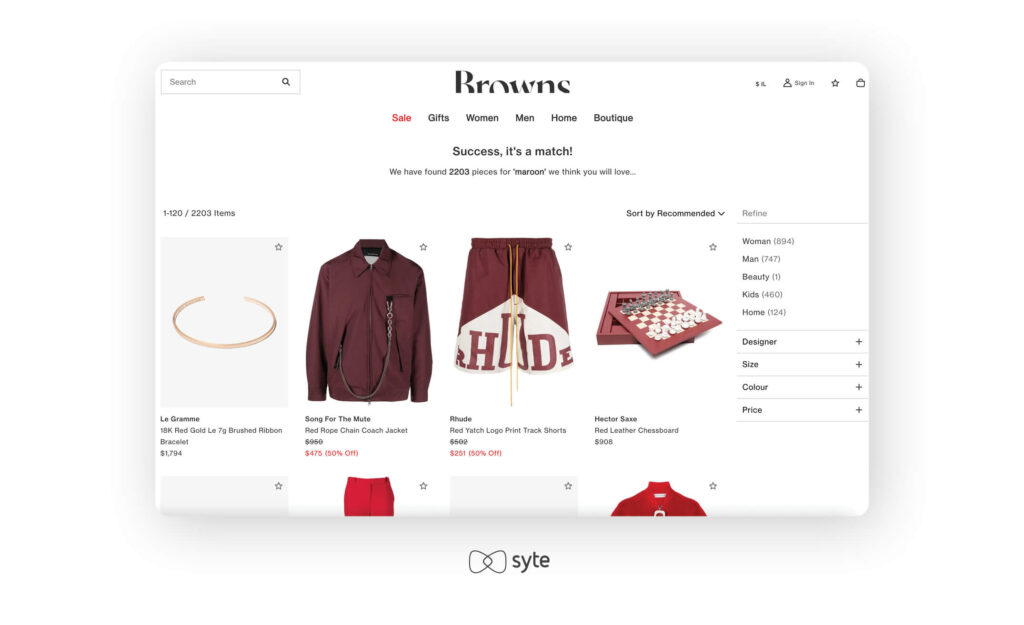
5. Use Comprehensive and Accurate Filters
Comprehensive filters are essential to browsing and searching for products. Still, many brands don’t get them right. According to Baymard, 36% of sites have features that are downright harmful in easing their users’ ability to find and select products. Sites with mediocre product list usability saw abandonment rates of 67-90%.
One way to optimize filters is by making them as descriptive as possible. C&A has all the basic categories in addition to material, product type, collection, leg shape, and #WearTheChange, which is useful for customers looking for sustainable options.
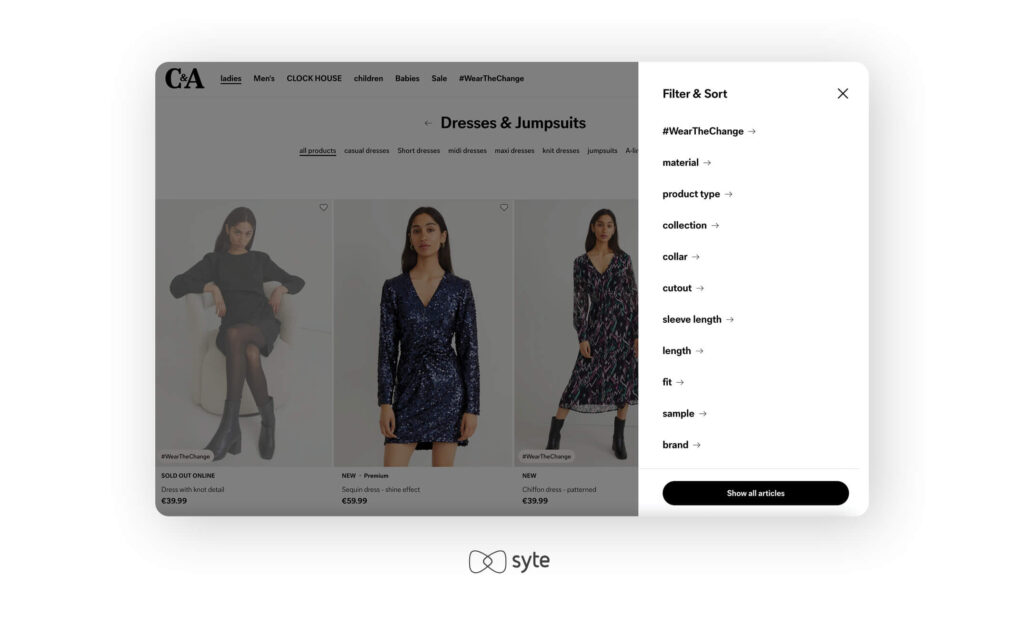
6. Give High Visibility to Relevant Recommendations
A visual AI algorithm can display results and recommendations based on real-time user preferences and site activity. Customers don’t have to sift through pages of items unrelated to their search, which helps to boost engagement and purchase decisions that lead to conversion. Fashion AI also affects product recommendation engines, so they capture items that appeal to customers. Venca’s Complete the Look carousel is one way to make use of fashion AI.
eCommerce product recommendation engines positively impact revenue and customer loyalty. 75% of shoppers feel they’re more likely to purchase from brands that provide personalized recommendations while 56% say they’re more likely to return for additional purchases. Moreover, Google found personalized recommendations work just as well in mobile sites and apps. 63% of smartphone users are more likely to purchase from companies when they offer relevant suggestions.
Consumers often hesitate when it comes to purchasing clothing online because they can’t fully assess an item’s make or quality. High-resolution photos and tools that allow close inspection of products can ease any uncertainty when shopping online. This is especially important in secondhand platforms where retailers have to be transparent about any imperfections.
Brands can choose to add more features to instill confidence, including 360-degree displays for improved visualizations and AR/VR tools for a more immersive experience. Another proven method is quick views,” a feature used by over half of brands, which helps customers to closely view items in visually-driven sites.
Social media is one of the easiest ways to connect with customers and makes for easier communication because followers can connect with likes, comments, and private messages. Hunkemoller maximizes its Instagram account with more content that supports discovery and interaction, such as easy-to-consume guides on how to pick lingerie.
The benefits can be seen across the board, but even more so with younger users. 35% said social media ads influenced their purchasing decisions, although the figure is higher at 75% for Gen Z respondents. Some even prefer social media over search engines, with 54% of Gen Z shoppers and 58% of Millennials agreeing that social platforms are better for discovering new products.
9. Optimize the Mobile Experience
Online shopping is easier and more accessible through mobile phones, and retailers miss out when they have no apps or sites optimized for mobile use. In 2021 alone, US mobile commerce sales exceeded $360 billion and are expected to double by 2025. Customers are also likely to be more loyal: 51% of users are motivated to use brand mobile apps because they receive rewards or points. Ardene is a good example, with free shipping offered for mobile shopping, as well as free returns, and a buy now, pay later scheme.
The internet is shifting, allowing for greater immersion and virtual worlds through AR and VR technology. Although usually associated with toys and gaming, 76% of customers would like to use AR as a tool in their everyday lives. In 2021 alone, the market for AR, VR, and mixed reality (MR) amassed $28 million.
AR technology is also seeing more use in eCommerce as fashion brands apply it towards virtual product fittings. Through the power of VR, Prada is enabling customers to experience their universe closer than ever without even stepping into a store.
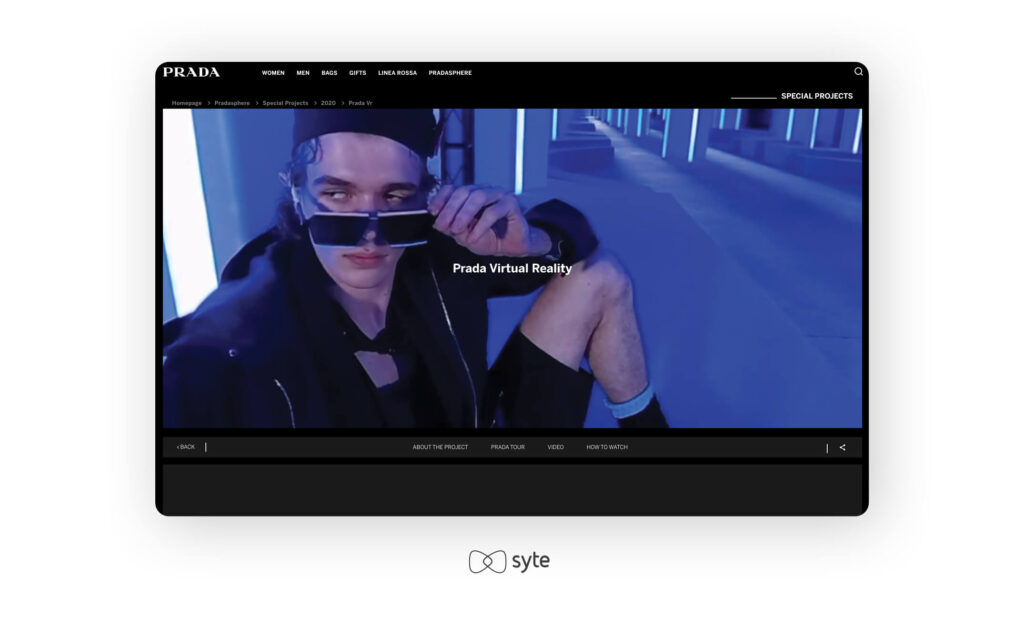
11. Keep Product Discovery Going On and Off-Site
Shoppers typically progress through multiple touchpoints before finalizing their purchase. 74% of customers have used multiple channels when beginning and completing a transaction. To reach that point, however, there should be consistency in the messaging and overall experience. SMS and email campaigns are some of the means to ensure that.
The latter, in particular, can be a high-performing sales channel through fashion AI and product recommendation engines. 50% of shoppers are more likely to purchase from a retailer that reaches out at the right time when there’s a need for a product or service. Brava Fabrics, for example, promotes upcoming retail holidays while also including items shoppers have previously expressed interest in.
Wrap-Up
With heightened competition and economic uncertainty, there is no better time to step up your product discovery game. The strategies you put into motion could capture shoppers’ attention to inspire, entertain, and create an emotional connection with them in the process. By recreating the joy of in-person shopping in the online world, you will be on the road to higher conversion (CVR), larger basket sizes, and repeat customers.